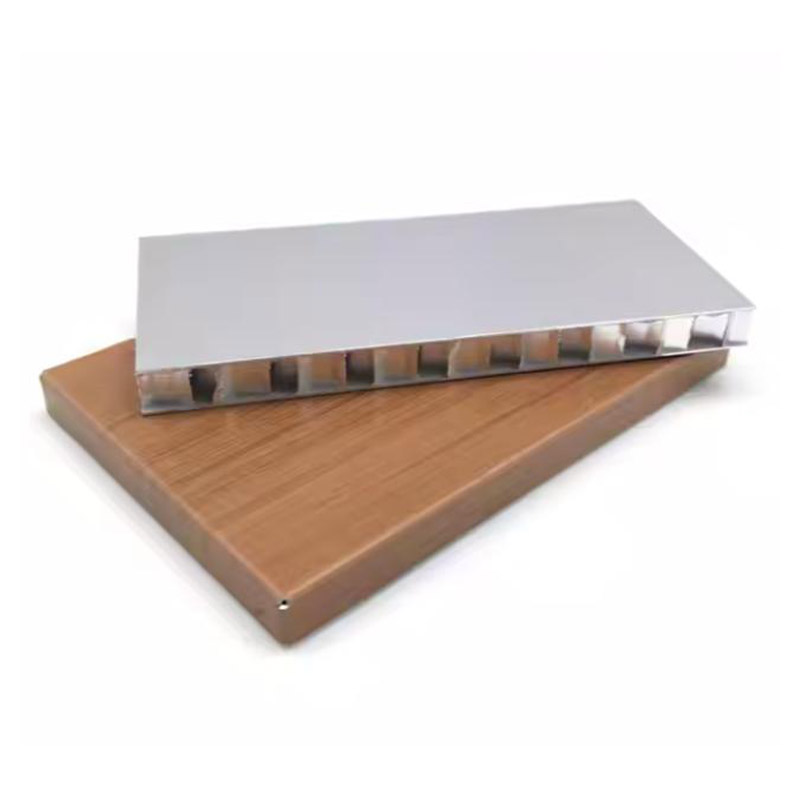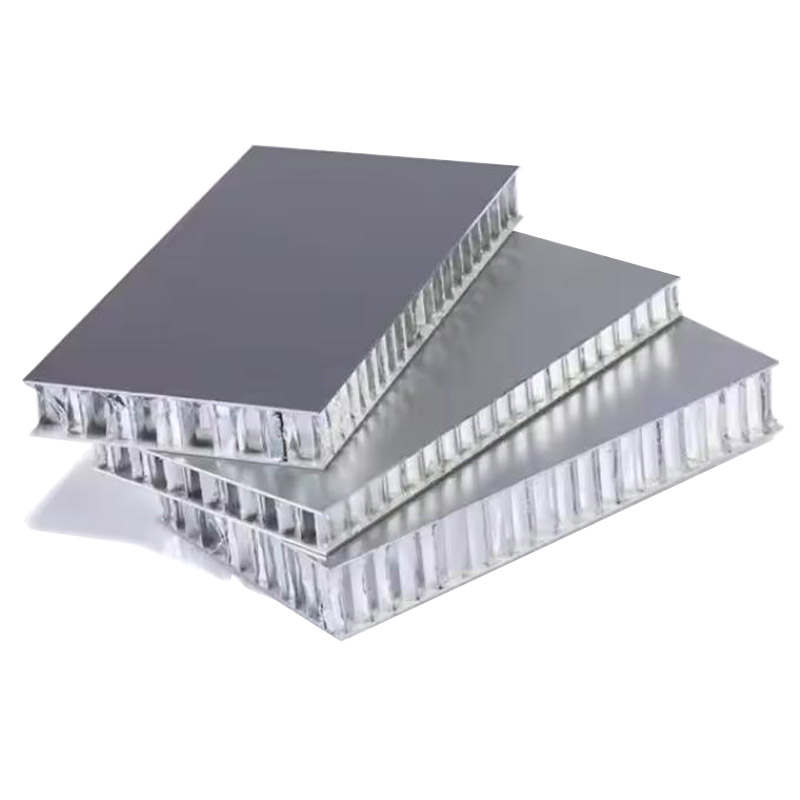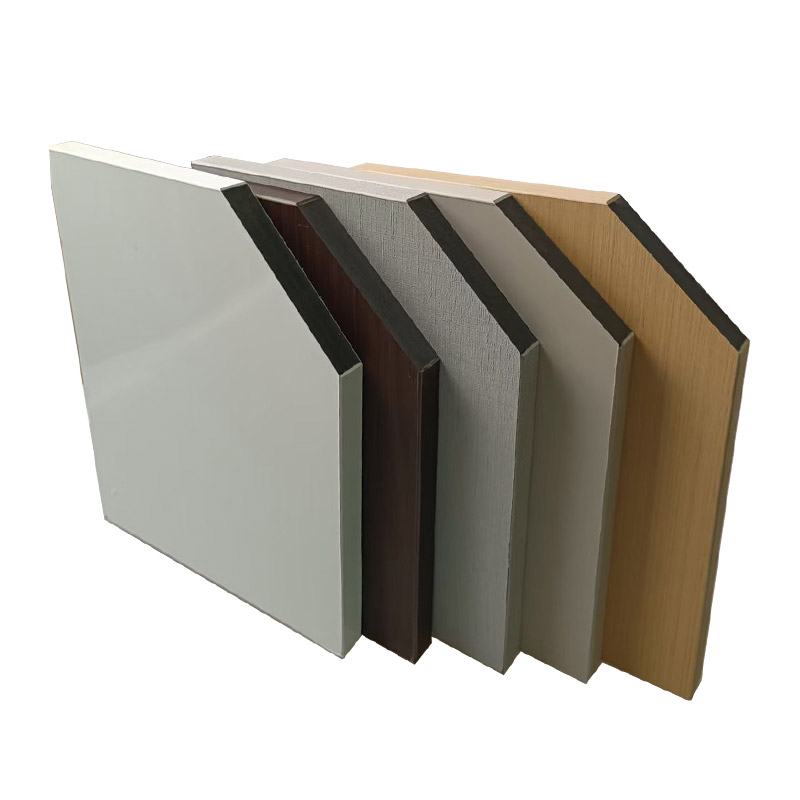Aluminium Composite Panel VS. Aluminium Honeycomb Panel: Differences
In the material selection for building decoration, curtain wall construction or furniture manufacturing, aluminum composite panels and aluminum honeycomb panels are two common yet easily confused materials. They all have a metallic texture in appearance, but there is a world of difference in their cores and performance. Improper selection not only may lead to budget overruns but also may leave potential performance and security risks for the project. This article will thoroughly analyze the differences between the two for you, helping you make the wisest decision.
Table of Contents
Core Unveiling: Distinct Structural Designs
To understand their differences, one must first see through their internal structures. This is the root of all the differences.
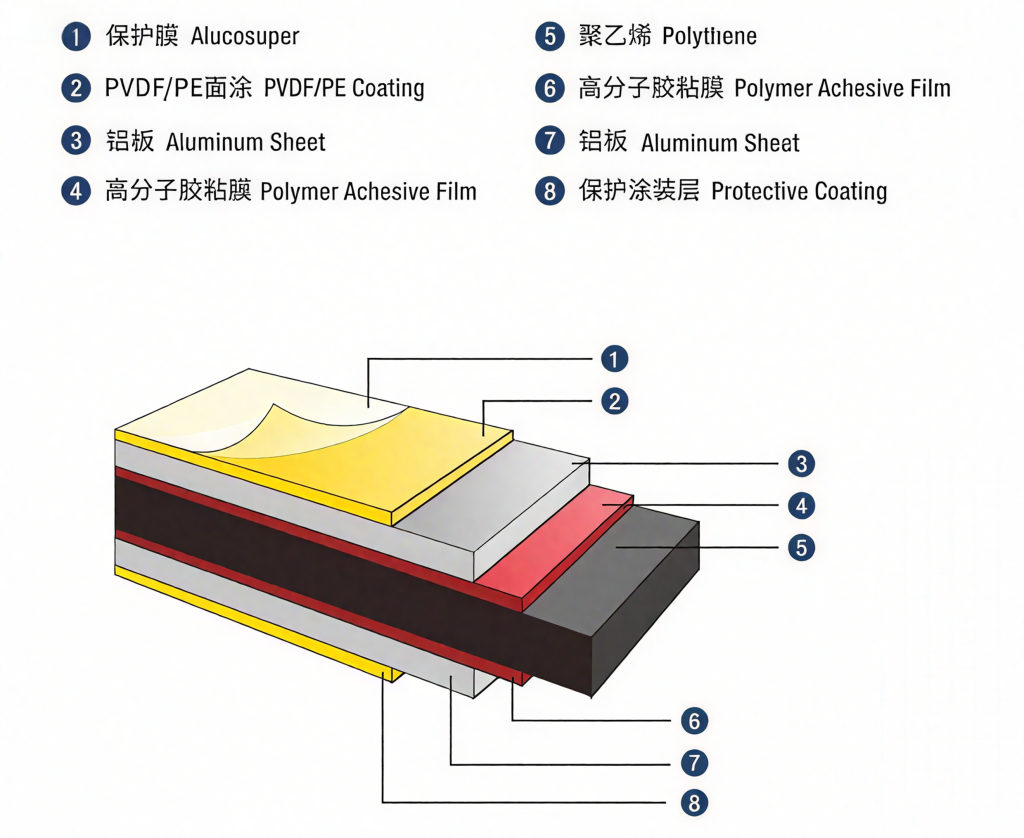
Aluminum composite panels (ACP) adopt a three-layer structure of a “sandwich” type.
The panel is a thin aluminum alloy plate, with a thickness usually ranging from 0.2 to 0.5mm, which can serve both protective and decorative purposes. The core material in the middle is crucial. Common ones include polyethylene (PE), fireproof rock wool, and aluminum-plastic. Different core materials will affect the fire resistance and moisture resistance of the board.
The structure of aluminum honeycomb panels (AHP) is more complex and advanced.
The panel is also an aluminum alloy plate, but its thickness is slightly thicker than that of the aluminum composite plate, generally ranging from 0.3 to 1.0mm, and the thickness can be customized according to requirements. The honeycomb core in the middle is made of aluminum. The hexagonal pores and the height of the honeycomb can both be adjusted. This structure can make the board more stable.
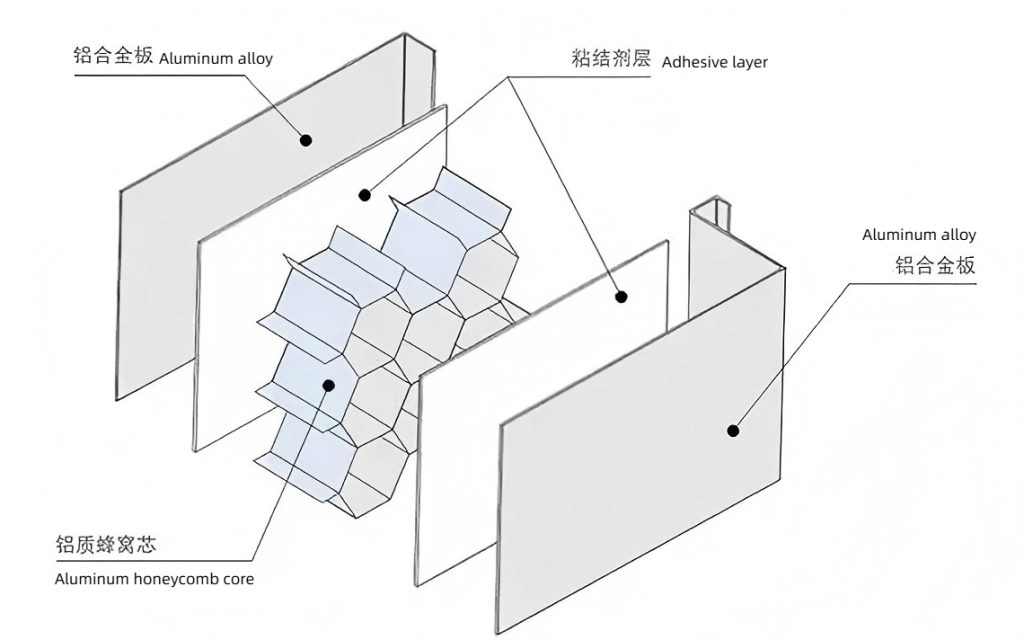
Performance Showdown: A Comprehensive Comparison of Six Key Indicators
Merely understanding the structure is not enough; the actual performance differences they bring are the key to making a choice.
Flatness and rigidity
Aluminum honeycomb panels, with the mechanical advantages of their honeycomb cores, possess extremely high bending strength and rigidity. Even in larger sizes, it can maintain absolute flatness and is not prone to bending or deformation. Aluminum composite panels perform well in medium and small sizes, but in large panel applications or environments with significant temperature differences, there is a risk of central bulging or edge depression.
Weight to strength ratio
Both belong to lightweight materials. Despite being slightly heavier than aluminum composite panels, aluminum honeycomb panels far exceed the latter in strength, achieving excellent “lightweight” and high-strength characteristics.
Fire resistance performance
In the safety performance evaluation, the fire resistance grade is the core indicator, and there is a significant difference between aluminum composite panels and honeycomb panels in this dimension. The common core material of aluminum composite panels is PE (polyethylene), which is a typical flammable material. Even if it is upgraded to flame-retardant (FR) core material, the highest standard it can reach is B1 grade flame retardancy. In contrast, the core material of aluminum honeycomb panels is an all-aluminum structure – aluminum itself is a non-combustible material. This makes the fire resistance rating of aluminum honeycomb panels generally reach the A1 non-combustible standard, and they are not prone to deformation at high temperatures, with stronger stability than aluminum composite panels. Therefore, for places with strict fire protection requirements such as high-rise buildings, subway stations, and hospitals, aluminum honeycomb panels are often the mandatory choice.
Sound insulation and heat preservation performance
The honeycomb cavities inside the aluminum honeycomb panel form many sealed air units, which can effectively block the transmission of sound and the exchange of heat, and have better sound insulation and heat preservation performance. The solid plastic core of aluminum composite panels has relatively ordinary performance in these aspects.
Processing and installation
Aluminum composite panels are easy to cut, groove and bend, have low requirements for processing equipment, strong on-site adaptability and are more convenient and quick to install. The processing of aluminum honeycomb panels requires more professional tools. The requirements for cut surface treatment are high, and it is not easy to make on-site modifications. The requirements for installation techniques are even higher.
Surface effect
There aren’t many differences between the two in terms of decoration. All of them can be processed using methods like anodizing, roller coating, or spraying to provide a wide range of colors and textures and satisfy different aesthetic requirements.

Application Scenarios
Performance determines their respective stages.
Aluminum composite panels are widely used in scenarios such as building exterior curtain walls, interior wall decoration, advertising signs, and exhibition stand construction due to their economic efficiency and good decorative properties.
Aluminum honeycomb panels, with their high strength, high flatness and excellent fire resistance, are mainly used in high-end commercial curtain walls, high-end interior partitions, ceiling suspension, rail transit carriages, furniture countertops, clean room walls and other fields.
Cost analysis: The trade-off between price and value
There is no doubt that the production process of aluminum honeycomb panels is more complex and the cost of raw materials is higher. Therefore, their price is usually two to three times or even higher than that of aluminum composite panels of the same specification. When making a choice, one should not merely compare unit prices but conduct a value assessment. If the project has high requirements for fire resistance, flatness and durability, then the long-term value and usage safety of aluminum honeycomb panels will far exceed their initial cost difference.
Final Choice Guide: How to Make the Right Decision
When faced with choices, you can follow the following path:
The first consideration should be fire protection regulations: Check the fire protection requirements of the project location. If it is stipulated that Class A non-combustible materials must be used, then only aluminum honeycomb panels can be chosen.
Evaluate performance requirements: Does the project have extremely high demands for the flatness, rigidity and sound insulation of the panels? If so, I tend to choose aluminum honeycomb panels.
Weigh budget constraints: Under the premise of meeting the bottom line of safety and performance, if the budget is limited, high-quality flame-retardant (FR) aluminum composite panels can be chosen as an economical option.
Consult professionals: Before making the final decision, be sure to consult the supplier or designer and request material certificates of the product and test reports from authoritative institutions.
In conclusion, the choice between aluminum composite panels and aluminum honeycomb panels is a trade-off between “cost” and “performance”. Understanding the core differences and clarifying the real needs of one’s own project can ensure that every investment is worthwhile and guarantee the success and safety of the project.

